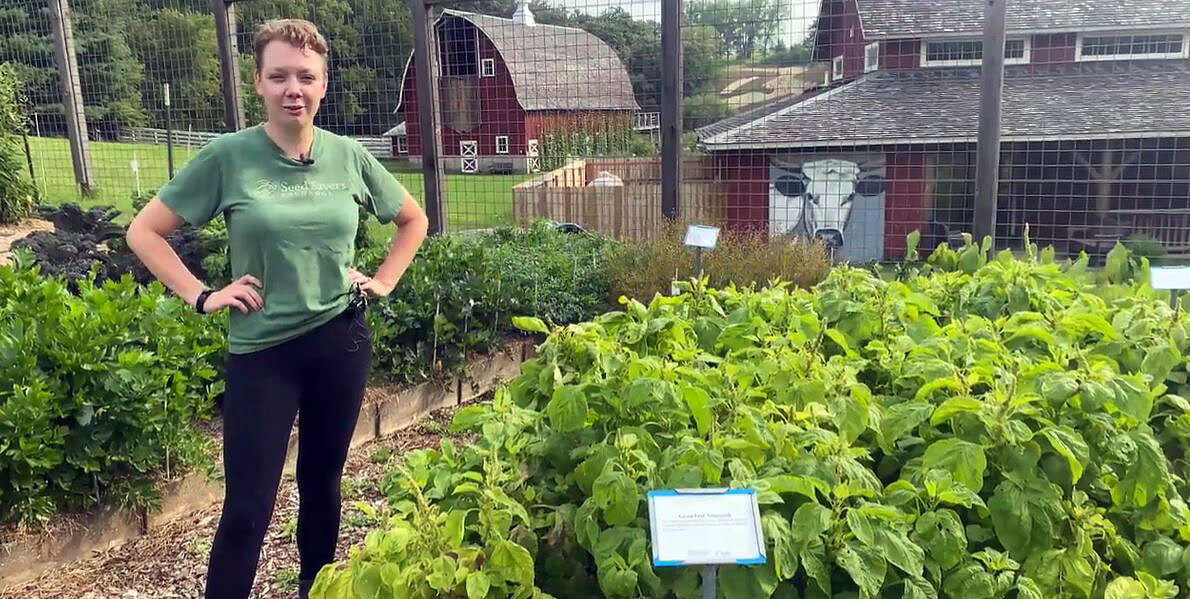‘Green Leaf’ amaranth: abundant and delicious
/Joey Stabenow stands beside the ‘Green Leaf’ amaranth growing in the SSE Evaluation Garden.
Did you know that amaranth is primarily harvested for its seeds and leaves? The seeds have a nutty flavor and can be used as “grain” for oatmeal or even as a thickener for soups. The leaves have a similar taste to spinach and are great in salads or stir-fry. Sometimes called “pigweed,” the average amaranth plant grows to be between five and eight feet tall.
‘Green Leaf’ amaranth is currently growing (in abundance) in the Seed Savers Evaluation Garden at Heritage Farm outside Decorah, Iowa. Staff members have enjoyed watching it grow and recently decided to snip a few leaves to make the following recipe.
Amaranth leaves in coconut milk
This recipe was originally published online at food.com.
INGREDIENTS
4 cups amaranth, leaf
4 cups water
2 cups coconut milk
1 large onion
2 large tomatoes
1 tablespoon vegetable oil
1 teaspoon salt
lemon (optional)
DIRECTIONS
1. Bring water and salt to the boil in a large pot.
2. Add washed amaranth leaves and boil for 15 minutes or until tender.
3. In a separate pan, heat the oil and cook the chopped onion until golden brown.
4. Add the chopped tomatoes and cook until soft.
5. Add the well-drained amaranth leaves and stir to combine.
6. Add the coconut milk and continue cooking for about 10 minutes.
7. Adjust seasoning or add lemon juice to taste.
Where to find amaranth seed: You can find similar varieties on the Exchange, including ‘Callaloo Revolution,’ ‘Mayo Green,’ ‘Hartman’s Giant’, ‘Golden Giant,’ and ‘Red Garnet.’ The leaves of all these varieties are edible.














